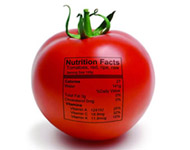Nutrition and Health Sciences, Department of

Department of Nutrition and Health Sciences: Faculty Publications
Document Type
Article
Date of this Version
4-22-2024
Citation
Chai, W.; Tao, M.-H. Overall and Sex-Specific Associations of Serum Lipid-Soluble Micronutrients with Metabolic Dysfunction- Associated Steatotic Liver Disease among Adults in the United States. Nutrients 2024, 16, 1242.
Abstract
This study examined overall and sex-specific associations of serum lipid-soluble micronutrients including α- and γ-tocopherols, 25-hydroxy-vitamin D (25(OH)D), retinol, and six major carotenoids with metabolic dysfunction-associated steatotic lever disease (MASLD) using the 2017–2018 National Health and Nutrition Examination Survey. This analysis included 3956 adults (1991 men, 1965 women) aged ≥ 20 years. Steatotic liver disease was determined through transient elastography examination. Odds ratios (ORs) and 95% confidence intervals (95% CIs) for MASLD associated with micronutrients were estimated using logistic regressions. Higher serum α-tocopherol (highest vs. lowest quartile: OR = 1.53, 95% CI = 1.05–2.22, p = 0.03) and γ-tocopherol (highest vs. lowest quartile: OR = 4.15, 95% CI = 3.00–5.74, p < 0.0001) levels were associated with increased odds of MASLD. Higher serum 25(OH)D levels were associated with reduced odds of MASLD (highest vs. lowest quartile: OR = 0.41, 95% CI = 0.27–0.61, p = 0.0001). Inverse associations with the condition were also observed for carotenoids (α-carotene, β-carotene, α-cryptoxanthin, β-cryptoxanthin, combined lutein and zeaxanthin, and lycopene) in the serum (Ps < 0.05). The results were comparable between men and women, except for those on α-tocopherol, for which a positive association was only observed for men (p = 0.01). Our results suggest potential protective associations of serum 25(OH)D and carotenoids with MASLD. The positive associations between tocopherols and MASLD may reflect pathophysiological conditions associated with the condition.
Included in
Human and Clinical Nutrition Commons, Molecular, Genetic, and Biochemical Nutrition Commons, Other Nutrition Commons


Comments
Open access.